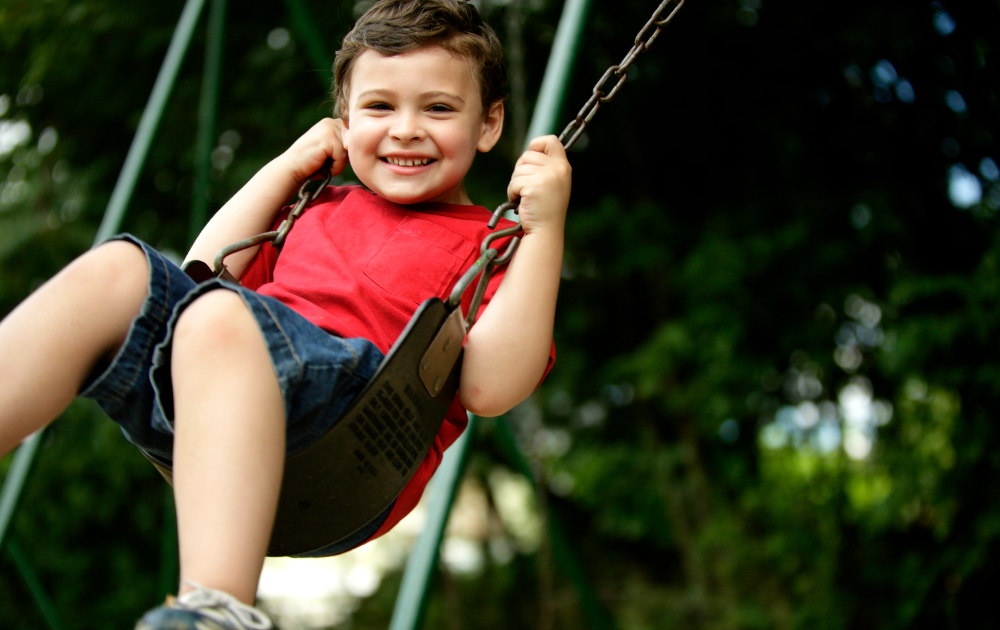For individuals with autism, swinging often holds a unique appeal that goes beyond simple enjoyment. Swinging can provide a sense of security and predictability in an otherwise overwhelming world.
The rhythmic motion of swinging can create a comforting and soothing experience, helping individuals with autism regulate their sensory input and find a sense of control.
Moreover, swinging offers a proprioceptive experience that allows individuals with autism to engage with their bodies and surroundings tangibly. This physical feedback can be particularly beneficial for those who struggle with body awareness and coordination.
The repetitive nature of swinging can also contribute to a calming effect by promoting relaxation and reducing anxiety.
The Impact of Swinging on Sensory Regulation
Swinging plays a crucial role in supporting sensory regulation for individuals with autism. The back-and-forth motion of swinging can help stimulate the vestibular system, which is responsible for the sense of balance and spatial orientation. By engaging the vestibular system through swinging, individuals with autism can improve their sensory processing abilities and enhance their overall sensory integration.
Additionally, swinging can aid in desensitizing individuals with autism to sensory stimuli that may typically trigger negative responses.
The controlled sensory input provided by swinging can help individuals gradually adapt to various sensations, leading to improved tolerance and decreased sensory sensitivities over time.
Incorporating swinging activities into a sensory diet for individuals with autism can have a positive impact on their overall well-being and sensory processing.
Benefits of Swinging for Autistic Individuals
Swinging can offer various benefits for individuals with autism, particularly in terms of sensory integration, calming effects, and enhancing body awareness.
First and foremost, swinging plays a pivotal role in sensory integration for individuals with autism. The repetitive back-and-forth motion of swinging helps to regulate sensory input, allowing individuals to process and organize sensory information more effectively.
This sensory integration through swinging can improve focus, attention, and overall sensory processing abilities.
Swinging is also known to have calming effects on individuals with autism. The gentle and rhythmic movement of swinging can help reduce anxiety, promote relaxation, and provide a sense of comfort and security. The predictable motion of swinging can create a soothing environment, aiding in emotional regulation and stress reduction.
Lastly, engaging in swinging activities can also enhance body awareness in individuals with autism. The proprioceptive input obtained through swinging – the awareness of one’s body position and movement in space – helps individuals develop a better understanding of their bodies.
This increased body awareness can lead to improved coordination, balance, and spatial orientation skills.
Embracing the benefits of swinging for individuals with autism can positively impact their sensory experiences, emotional well-being, and overall development. By recognizing and promoting the advantages of swinging activities, caregivers and individuals alike can harness the therapeutic potential of swinging to support sensory needs and enhance quality of life.
Considerations When Implementing Swinging Activities
Before incorporating swinging activities for autistic individuals, it is essential to prioritize safety precautions to ensure a positive and secure experience. By implementing specific safety measures, caregivers and individuals can enjoy swinging activities while minimizing potential risks.
Here are some safety precautions to keep in mind:
- Supervision: Assign a responsible adult to supervise the swinging activity at all times to prevent accidents and injuries.
- Equipment Inspection: Regularly inspect the swing equipment for any signs of wear and tear, ensuring that it is in good working condition before use.
- Secure Anchoring: Ensure that the swing is securely anchored to a stable structure to prevent tipping or instability during use.
- Proper Body Positioning: Instruct individuals on proper body positioning while swinging to minimize the risk of falls or collisions.
It’s worth noting that each autistic individual may have unique sensory preferences and sensitivities, making it crucial to tailor swinging activities to accommodate their specific needs. By customizing the swinging experience, caregivers can optimize the benefits while ensuring comfort and engagement for the individual.
Through the implementation of safety precautions and tailoring swinging activities to individual needs, caregivers and individuals can create a supportive and enriching environment for individuals with autism to benefit from swinging activities while promoting sensory regulation and overall well-being.
The Key Takeaway
In understanding the connection between autism and swinging, it’s clear that simple movements can have a powerful impact. Swinging offers a safe, enjoyable way for individuals with autism to explore sensations, find calm, and connect with their bodies.
This simple activity can be an incredible tool for managing sensory needs, supporting emotional balance, and enhancing everyday well-being.
Embracing swinging helps you unlock a natural, joyful path to comfort and self-regulation for those on the autism spectrum. At Golden Care Therapy, our skilled ABA therapists in New Jersey are here to guide you through customized therapeutic approaches tailored to each individual’s needs.
We’re committed to providing compassionate, high-quality support that fosters growth and confidence. Reach out to us today and discover how our dedicated team can make a difference – contact us to begin your journey with Golden Care Therapy!
Sources:



